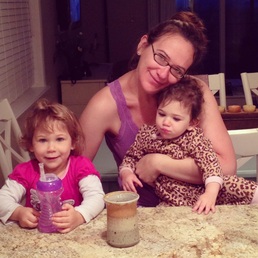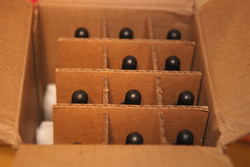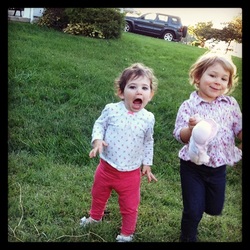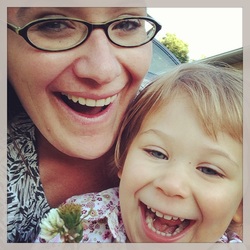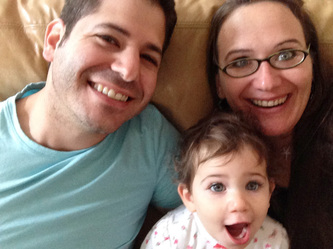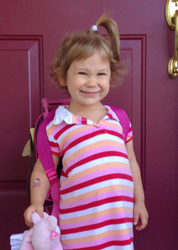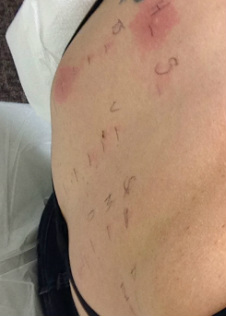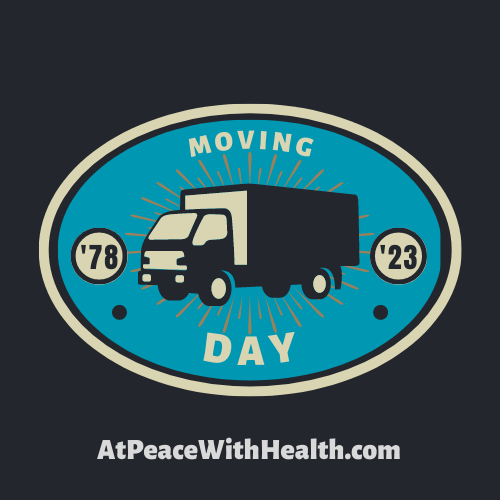
I don’t remember much about moving to California from New York. I was in kindergarten, sharing the back of a station wagon with my older brother. In the back of the gray Datsun B210, I did all the school work my teachers gave me and sometimes convinced my brother to play Barbies with me. Our family rented a house in Fremont before eventually moving to Tracy and buying our own home. When the moving truck drove away and all was unpacked, my training wheel was missing. We had one, just not the other.
“It must have been left on the truck,” my dad said.
I learned to ride my bike leaning to the side that had the training wheel, which only made learning to ride without training wheels harder. I kept leaning and leaning, falling over, scared of falling over.
“You’ve got to overcompensate for that now,” my dad said. He held onto the back of the bike and let go, over and over. “Find your balance.”
I would slam my feet down in fear and frustration, scared to lean too far in either direction. I knew I’d fall. I couldn’t find my balance.
I don’t remember the details of moving to what would be my main childhood home in Tracy, California. I knew I was getting a cat and starting second grade. It was all blurry. I knew how to ride a bike by then and had moved on to roller skates.
I remember moving away from home to go to college, moving back in when college “didn’t work out”, moving out to live with someone else, moving back in when things unraveled, moving out to my own place, to rent a room somewhere else, to live with a boyfriend, to get a roommate in an apartment, and moving back in whenever it all fell apart.
When my parents moved out of state and into retirement in Arkansas, the safety net of my “home” was ripped out from under me. I had to overcompensate for my lean. I leaned into my own abilities, my responsibilities, my strength and I accomplished great things always knowing I couldn’t lean the other direction anymore. I might fall. Fear and frustration pushed me forward.
Moving to Virginia with my new husband and my very pregnant belly is a moving day I’ll never forget. My dad and I drove from Missouri to Virginia while my husband and his brother made the longer drive together in our car with our pets. We arrived at the empty small home we were renting until we would buy our first home, living out of suitcases and sleeping on air mattresses until our moving truck arrived.
I don’t think anything got left on the truck that day. I think we learned to double check. At the far back of the truck was my childhood piano. My dad, my husband, and our friend helped push that piano up the length of the truck, down the ramp, and eventually up the hill to the side door and into the house. It took so long. It was so heavy. I was too pregnant and banned from helping.
When everything was unloaded and the unpacking began, my dad made his plans for the return trip to Missouri. I didn’t want him to go. I kept making plans. “Let’s go to a store and get some good food to cook and send you off with a great meal!” “Let’s check out that coffee shop one more time.” I wasn’t done leaning on him, his strength, his stability, the way he made everything okay. Until finally, he drove off one morning for his long drive home.
Starting my “real life” as a wife and mother in a new state, new home, new everything was an adventure, often lonely, often filled with anxiety. I began wanting my parents closer. Their visits twice a year weren’t enough time to spend together, to get to know their granddaughters and eventually their grandson. I wanted their home to be near my home and for “home” to include us all.
Many years later, they made that move all the way to Virginia from Missouri and it felt like a true homecoming. I welcomed them with excitement and joy, determined to help make everything work out. Dad’s body was in pain from cancer spreading throughout it and they left almost everything behind to make the trip easier. It would all work out. I leaned in. I leaned hard. I didn’t care if I fell.
When Dad died only 6 weeks later, suddenly, unexpectedly, and tragically, the funeral home came to move his body. I sent the kids to the neighbor’s house, not wanting them to remember him that way, not ready to tell them he was gone. Surrounded by my husband, mom, brother, and two close family friends, we watched them wheel his body down the hall, down the sidewalk, down the driveway and into the car. I would not look away. I would not let his move go unwitnessed. I leaned in, into the frustration, the fear, and the pain.
In the coming weeks we moved mom into the home they’d purchased together. We heaved boxes with his handwriting on them. We set aside the files he had so carefully labeled. We moved the items he had packed for this move-in day that he wasn’t present for. And it hurt.
We are approaching another moving day now. My mom has bought a house around the corner from us, so close and such a blessing for us all. This moving day is exciting, it’s sad, it’s bittersweet doing it all without him. I can feel him holding on to the back of me and saying, “You’ve got to overcompensate for that lean. Find the balance.”
Balance has never been my strong point. With vision in one eye, my head perpetually tilted to one side, leaning always one way or the other, and zero depth perception, I physically find balancing nearly impossible. In my heart, I struggle with balance as well, swinging widely like a pendulum across the spectrum of emotions (excitement, disappointment, grief, celebration, sadness, hope, hopelessness). I lean one way. I lean the other. I wobble around, unsteady and unsure. But I’d rather continue on unsteady feet than push against the waves of feelings that wash over me, fighting against them with fear and frustration, stamping my feet down to stop any forward motion. I would rather overcompensate repeatedly, feeling all the feelings and knowing the depths of my own pain and the heights of my own joy.
Dad was so brave, so strong in his faith. When it became clear that his heart was failing and he would not recover from the blood loss he was experiencing, he said, “I’m not afraid. I know where I’m going.” He walked such a strong, stable, steady road of faith, loyalty and responsibility. I, meanwhile, am wobbling behind him leaning one way and then the other, but I’m starting to figure this thing out. He lent me his faith on his deathbed and I have leaned on it like the only existing training wheel we could find after unpacking the grief, the busy-ness that comes with death, the funeral, the paperwork, and the memories. Taking the training wheel of his faith off, I put it on a shelf of cherished memories and learn to move forward slowly and even with excitement at times. Mostly, though, I’m tired and it still hurts.
He knew where he was going. He wasn’t scared. I didn’t want him to go. I leaned one way. I was determined to make it all work out. I leaned another way. I would fix him. I leaned forward, willing it all to be okay. I told him to lean on me. And then it was over. And he was gone. He let go and I wobbled off down the road knowing that stopping wasn’t an option. I’m getting the hang of it now, continuing forward knowing he’s behind me, finding my balance even as I lean too far one way and then the other. I know where I’m going now. I’m not scared.
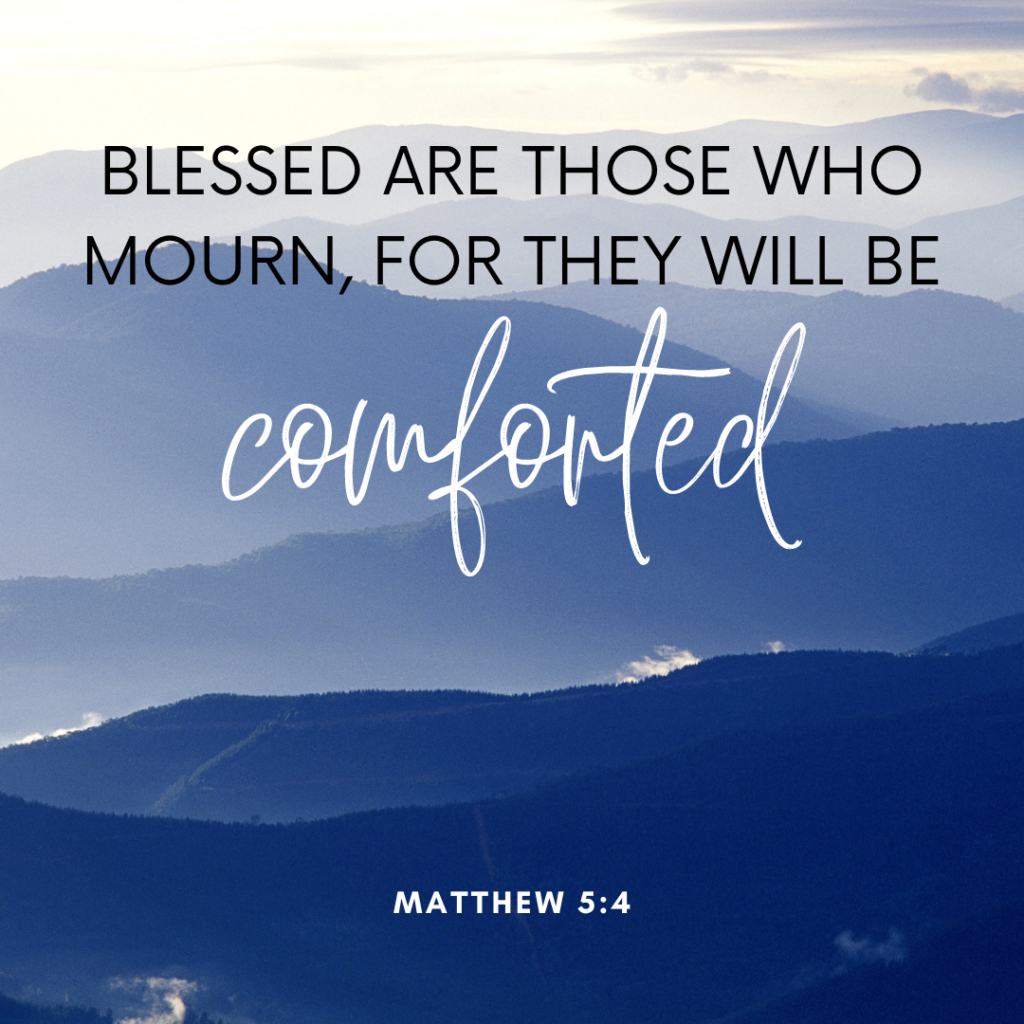



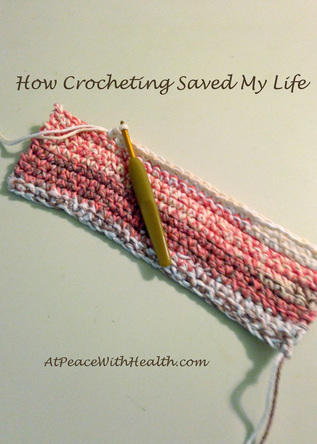



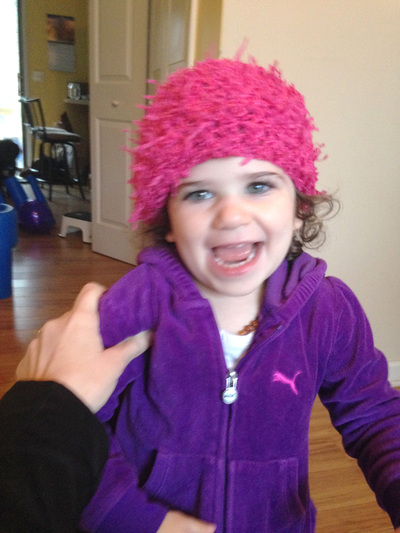


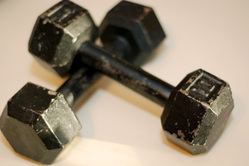
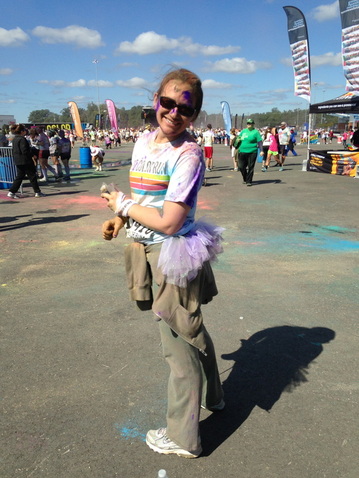 friends!
friends!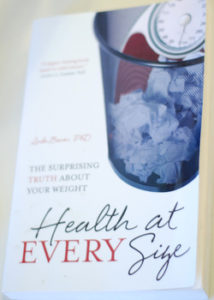
 Remember when I wrote about
Remember when I wrote about 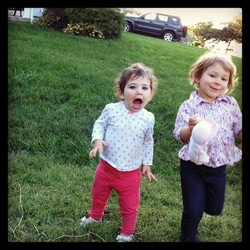 Disordered eating is not just about eating disorders. It’s not just starving, bingeing or purging yourself. It’s restricting yourself in the name of dieting or losing a few pounds. It’s berating yourself when you “screw up” and bemoaning all the “bad” foods you ate. It’s forcing yourself to work out more later because of what you ate earlier. It’s calories in, calories out with complete disregard for the human being who has thoughts and feelings that are so much more important. Disordered eating holds you back from living.
Disordered eating is not just about eating disorders. It’s not just starving, bingeing or purging yourself. It’s restricting yourself in the name of dieting or losing a few pounds. It’s berating yourself when you “screw up” and bemoaning all the “bad” foods you ate. It’s forcing yourself to work out more later because of what you ate earlier. It’s calories in, calories out with complete disregard for the human being who has thoughts and feelings that are so much more important. Disordered eating holds you back from living.
